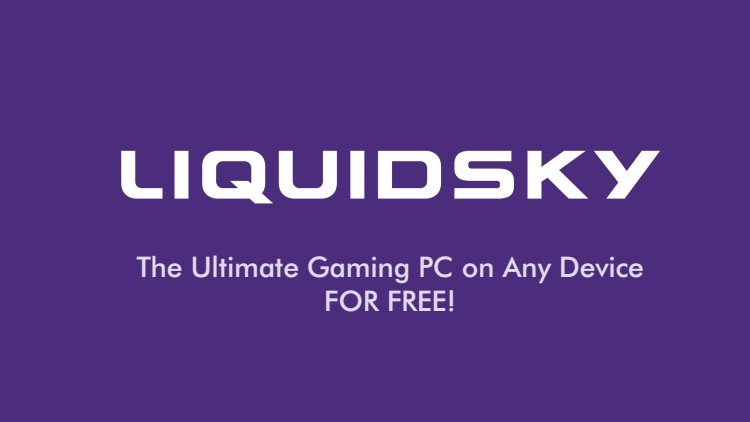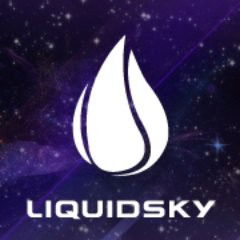
While I’ve heard of LiquidSky in the past, mainly more than 6-7 months ago, I never used it. The reason for using LiquidSky is for those who either don’t have a decent gaming PC or don’t have access to a PC at all, usually Linux/Android/Mac users. I don’t meet those requirements as I’m lucky to be able to build my own PCs and afford the upgrades.
However, after LiquidSky’s CES 2017 keynote, we decided to put several games to the test and see how LiquidSky was able to handle those games. We’re able to do this as we signed up for the LiquidSky beta prior to it ending on January 6th, 2017. Which is why many of you aren’t able to access the beta, just putting that out there for those who have been asking.
We’ll also start a mini-FAQ as to what worked and what didn’t, more so for tracking and present this feedback to the LiquidSky team.
What we found out so far (1.7.2017)
It’s easier to state what didn’t work, instead of what did. So let’s start out this way. After we posted the LiquidSky CES 2017 Keynote Recap video on Youtube, we were asked several questions regarding the service. We didn’t have the answers then so we took it upon ourselves to test out what was asked.
Q: Will PlayStation Now work in LiquidSky.
A: At the time of this beta, no it does not. PlayStation Now requires a Windows 10 install for the installer executable to run. Currently, the LiquidSky virtual machines are running Windows Server 2012 R2, which does not have a compatibility mode for Windows 10 applications. This will change as LiquidSky has stated that the updated platform will run Windows 10.
Q: Do the Dualshock 4 controllers work in LiquidSky?
A: Yes and No. I was able to test the DS4 controller by using the official Sony USB Wireless adaptor and DS3Windows. Since LiquidSky uses USB pass-through, I was able to connect it my local PC and it was accessible on the virtual machine. I then launched two games on Steam and tested to see if they saw the controller, too which they did. Everything worked correctly with the exception of the analog sticks. For some reason, the vertical functions were inverted and no matter of controller configuration could fix it.
Q: What video card does LiquidSky use?
A: Currently they are utilizing the Nvidia GRID K280Q. This is a high-end workstation graphics card and is based on the Kepler/GK104 from Nvidia. Since LiquidSky has mentioned they will be adding support for 8GB GPU’s, we aren’t sure if this means they will be upgrading to a newer version of Nvidia’s GRID tech.
Q: Can Windows Store games (UWP) work with LiquidSky?
A: Not at the moment. It wasn’t possible to test this as the Windows store requires a personal/individual login. While it is possible to do with LiquidSky, currently access is blocked to the Windows store. This will change as LiquidSky has stated that the updated platform will run Windows 10.
Q: Are there any restrictions as to what games can be run in LiquidSky?
A: They must be able to run in Windows XP/7/8. If it runs on those operating systems and Steam, it will run in LiquidSky.
Testing Results
The first round of games includes two personal favorites of mine; Dark Souls III and Android Assault Cactus. Both games were testing using ultra performance setting in the LiquidSky virtual machine. This is double the high setting, giving access to 7 vCPU, 16GB of memory, 500GB of storage and 8GB of Vram. This costs 2 SkyCredits per hour. Since I’m in Delaware, I was connected to the Washington, DC, data center and was under 20ms via my connection. This is likely while I had such positive results. Unfortunately, I’m unable to select a different data center as the LiquidSky uses geolocation to find the best-suited data center, so I won’t be able to try it out with other locations.
That is unless LiquidSky grants me some sort ability to do so.
The first game that was tested was Dark Souls III. This is a game requires split-second decision and actions, such as parrying, blocking and dodging. Knowing all this, I figured this would be a good test to see how it performs with the latency being added and how much that latency would affect gameplay. I left the game at its default graphical settings as I wasn’t sure how much strain it would put on the LiquidSky VM. It looked decent, however, the latency that was introduced was very apparent. Dodging wasn’t as responsive and I had to adjust by dodging earlier, which often resulted in dodging more than once. This was due to me noticing that at times my button presses weren’t being received or received late. This was also true with swapping out weapons and using items.
During the first boss encounter, I attempted to switch away from Estus flask several times and to my Black Firebombs, only for that action to never occur. This caused me to use my Estus instead of the desired effect and me consuming all my flasks way too early. Outside of this, I felt the game ran decently, with minor hitches here and there. I’ll likely revisit this title again for more testing or perhaps an entire playthrough.
You can see the results of this test below. Skip ahead to 2:19 to bypass me talking about the testing results.
After testing Dark Souls III, I switched it up to a less graphically intensive title, but one that has considerably more action on screen. That game was Assault Android Cactus, a top down bullet hell dual stick shooter.
Things are a bit different here, definitely more positive with no effect on gameplay due to latency. I was able to dodge in and out from fire with no issues, my movements were responsive and there was no hint of delay. Any issues I had experienced with Dark Souls III, were non-existent here, which is good news.
That’s two different game types that have been tested so far, with multiple more tests happening over the week. So far we’re looking at doing at least one racing game, a fighting game and an action/adventure title. Keep and eye out for that as we’ll be posting here as well as Youtube.
If there’s a title you’d like for us to test out, please let us know and we’ll put it on the list. Assuming we have that game, that is.


